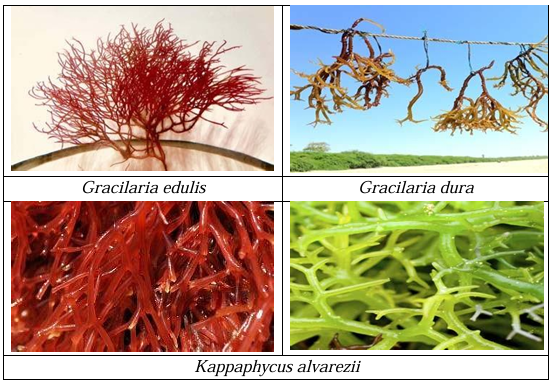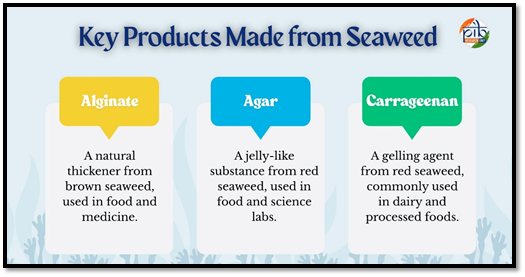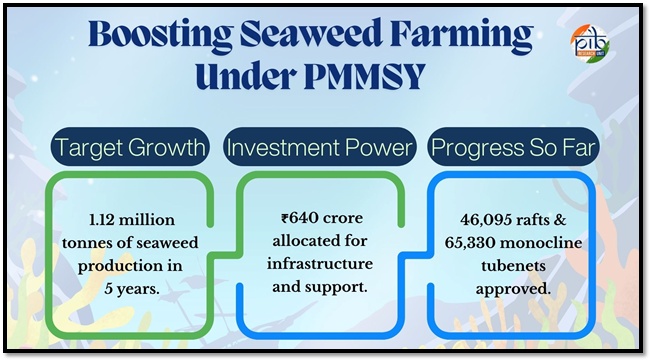GS I - Distribution of key natural resources
GSIII- Economic Development, Bio diversity, Environment
India is promoting seaweed farming as a sustainable and profitable industry under the Pradhan Mantri Matsya Sampada Yojana (PMMSY), aiming to increase production to 1.12 million tonnes in five years.

|
Suitable Conditions for Cultivation |
|

Seaweeds are also termed as the ‘Medical Food of the 21st Century’ as they are being used as laxatives, for making pharmaceutical capsules, in treatment of goiter, cancer, bone-replacement therapy and in cardiovascular surgeries.
For at least 1,500 years, the Japanese have enrobed a mixture of raw fish, sticky rice, and other ingredients in a seaweed called nori. The delectable result is a sushi roll.
|
Seaweed Derivative |
Type of Seaweed (Extracted from) |
Application |
Market Potential |
|
Alginate |
Extracted from brown seaweeds |
It’s used as a thickener in foods, cosmetics, and even medical products. |
US$ 213 million |
|
Agar |
Comes from red seaweeds. |
It is used in desserts, jams, and laboratory cultures. |
US$ 132 million |
|
Carrageenan |
Extracted from certain red seaweeds like Irish Moss. |
It’s used in dairy products, ice creams, and toothpaste. |
US$ 240 million |
The Government of India regulates the quality of seaweed used as biostimulants under the Fertilizer (Control) Order, 1985.
A biostimulant is a natural substance or microorganism improves the plant’s ability to absorb nutrients and makes them more resistant to stress, like drought or diseases. Unlike fertilizers or pesticides, biostimulants don’t provide nutrients directly but enhance the plant’s natural processes for better growth and health.

|
|
Kappaphycus alvarezii is a red seaweed (macroalgae) primarily cultivated for carrageenan, a gelatinous substance used as a thickener and stabilizer in food, cosmetics, and pharmaceuticals. |